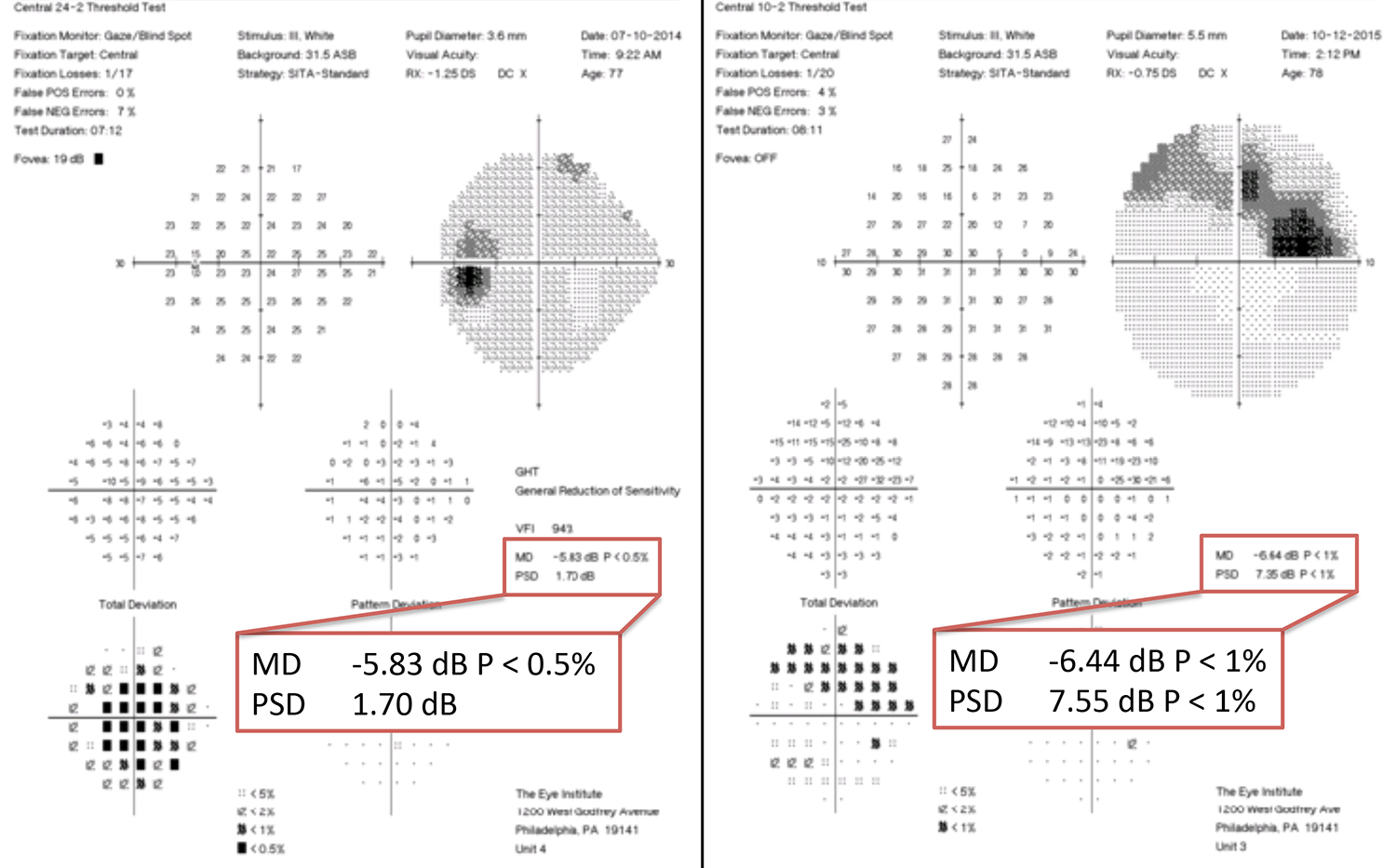 |
|
In many scenarios, 10-2 VF testing (right) can be more sensitive than 24-2 (left). Photo: Bisant A. Labib, OD. Click image to enlarge. |
While recent studies have reported that baseline 24-2 VF loss in the central 10° provides substantial predictive value for the future rate of glaucomatous VF loss, researchers have yet to investigate the relationship between 10-2 VF test results and future glaucoma VF progression. A team recently aimed to close this gap.
Over more than six and a half years, 9.9 24-2 VF tests were completed on 394 eyes of 202 subjects (119 primary open-glaucoma patients, 83 glaucoma suspects). Longitudinal 24-2 VF testing was completed every four to six months after baseline 10-2 testing. Analysis was completed to identify predictors of 24-2 mean deviation (MD) and VF loss.
While both baseline abnormal 24-2 points within the central 10° and baseline 10-2 VF defects were related to future 24-2 VF progression, regression analysis showed that baseline 10-2 VF loss had more robust and consistent predictive value compared with abnormal central 24-2 points.
“Specifically, we found that when comparing predictive models that did and did not include 10-2 VF variables, the models that included 10-2 VF metrics consistently outperformed models without 10-2 metrics,” the authors explained. “Further, our data shows that primary open-angle glaucoma eyes with a baseline 10-2 VF defect had a four-times greater rate of 24-2 MD deterioration compared with eyes with no 10-2 VF defect at baseline, while eyes with abnormal baseline central 24-2 points had only a three-times greater rate of 24-2 MD progression compared with eyes with no abnormal baseline central 24-2 points.”
“Consistent with prior studies, increased age, worse baseline 24-2 VF loss and presence of abnormal baseline central 24-2 points were also identified as predictors of future VF loss in this study, but these variables demonstrated lesser predictive ability compared with the presence of baseline 10-2 VF loss,” the authors continued. “These findings were maintained even when excluding eyes with moderate or advanced disease, suggesting that central 10-2 VF compromise is an important predictor across the spectrum of glaucomatous disease and that 10-2 VF testing has unique value within baseline glaucoma risk analysis.”
Additionally, this suggests that 10-2 testing provides independent and valuable information for predicting future glaucoma progression that is more precise than using central 24-2 VF information alone.
“While the optimal approach to implementing routine 10-2 VF testing must still be determined, it may be reasonable to obtain baseline 10-2 VF testing within the first few clinic visits to aid initial risk stratification, to create a baseline for future 10-2 VF test comparisons and to verify structure/function relationships,” the authors concluded.
Sullivan-Mee M, Kimura B, Kee H, et al. Baseline 10-2 visual field loss as a predictor for future glaucoma progression. J Glaucoma. October 12, 2022. [Epub ahead of print]. |

